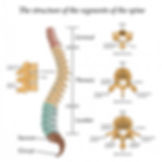Why Your Spinal Cord is Important and How to Keep it Healthy
- Ravi Gandhi, MD
- Nov 3, 2021
- 3 min read
There is a popular quote, “In life, it’s better to have a backbone than a wishbone”. It means to imply that having a backbone symbolizes strength and power of character. But speaking anatomically, no one has a backbone – it’s called a spine – really a spinal cord. And the spinal cord when combined with your brain comprises your body’s central nervous system which controls most functions of your body and mind. So, in this way, it is a very good idea to have a strong backbone.
As a neurosurgeon I help patients with surgical and nonsurgical interventions of the brain and the spinal cord. The spinal cord is so crucial to so many bodily operations and can be damaged in a variety of ways causing pain and impairment. Here is a quick overview of why your spinal cord is important and how to keep it healthy.
What Does My Spinal Cord Help Me Do?
· Move – sitting, standing, bending, and twisting
· Regulate - blood pressure and heart rate
· Feel – sense temperature and sensations
· Control - bodily breathing, urination, and bowel movements
How Does My Spinal Cord Work?
When your body moves your spinal nerves carry electrical signals via the spinal cord from the brain to skeletal muscles and organs. Your spinal nerves also relay sensory information like touch, pain, temperature, and other sensations from the muscles, joints, skin, and organs to the brain (all via the spinal cord).
What are the different parts of the Spinal Cord?
Your spinal nerves branch off the spinal cord, they are divided into five primary sections: cervical, thoracic, lumbar, sacral, and coccygeal. (Image credit SpineUniverse.com)

How can I keep my spine healthy?
A healthy spine has three natural curves that make an S-shape. These curves absorb shocks to your body and protect your spine from injury. Having strong back muscles can protect your spine and may prevent back problems. I recommend finding some back-strengthening and stretching exercises that work for your fitness level and doing them 2-4 times per week. It’s also important to maintain a healthy weight, as excess weight puts strain on your back. And of course, to echo everyone’s grandmother – sit up straight and watch your posture!

Common Conditions Caused by Spinal Cord Injury
· Pain in the neck and back
· Herniated disc
· Sciatica
· Spondylolisthesis
· Spondylosis
· Degenerative disc disease
Procedures Performed on the Spinal Cord
Vertebral augmentation, which includes vertebroplasty and kyphoplasty, are similar spinal procedures in which bone cement is injected through a small hole in the skin into a fractured vertebra to try to relieve back pain caused by a vertebral compression fractures.

Lumbar laminectomy, also called open decompression, is a surgical procedure performed to treat the symptoms of central spinal stenosis or narrowing of the spinal canal. The surgery involves removal of all or part of the lamina (posterior part of the vertebra) to provide more space for the compressed spinal cord and/or nerve roots.
Lumbar laminectomy, also called open decompression, is a surgical procedure performed to treat the symptoms of central spinal stenosis or narrowing of the spinal canal. The surgery involves removal of all or part of the lamina (posterior part of the vertebra) to provide more space for the compressed spinal cord and/or nerve roots.
Discectomy is surgery to remove lumbar (low back) herniated disc material that is pressing on a nerve root or the spinal cord.
Spinal fusion, also called spondylodesis is a neurosurgical or orthopedic surgical technique that joins two or more vertebrae.

Nucleoplasty is a minimally invasive, image-guided therapy used to treat back pain and leg pain caused by herniated discs. During nucleoplasty, one of our interventional radiologists uses image guidance to remove a small amount of disc tissue to relieve pressure on the nerves to help reduce pain and restore mobility.
There are a variety of spinal cord conditions that cause pain and other health impairments. Talk with your neurosurgeon about the best course of treatment for your spinal cord condition.